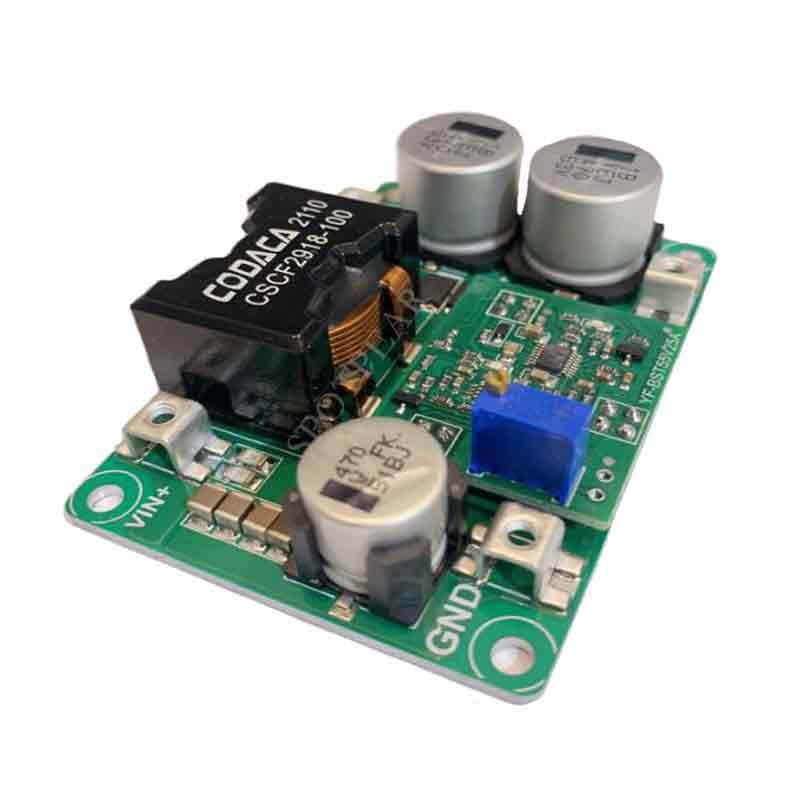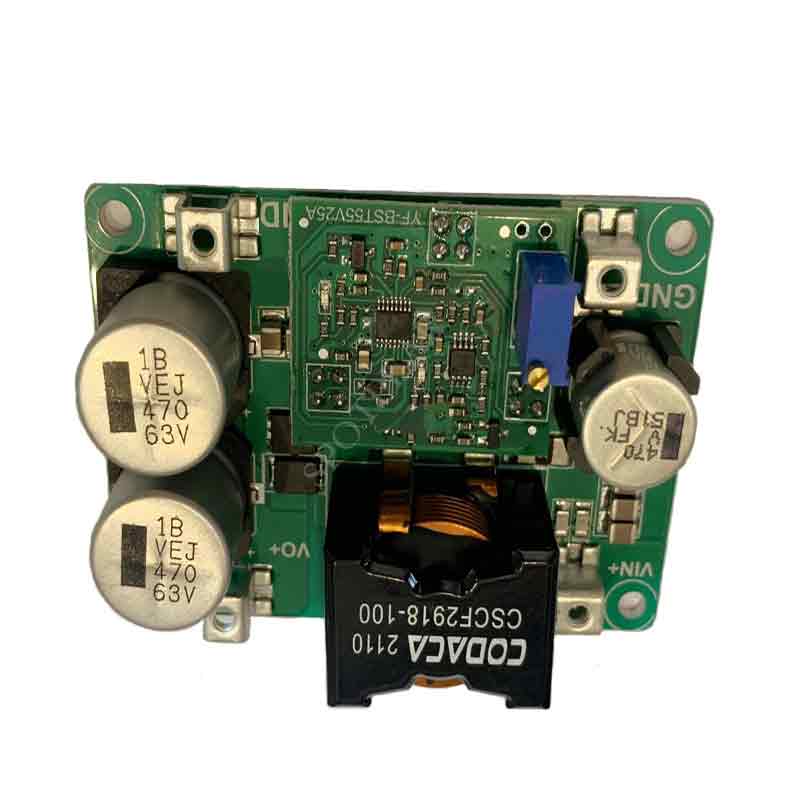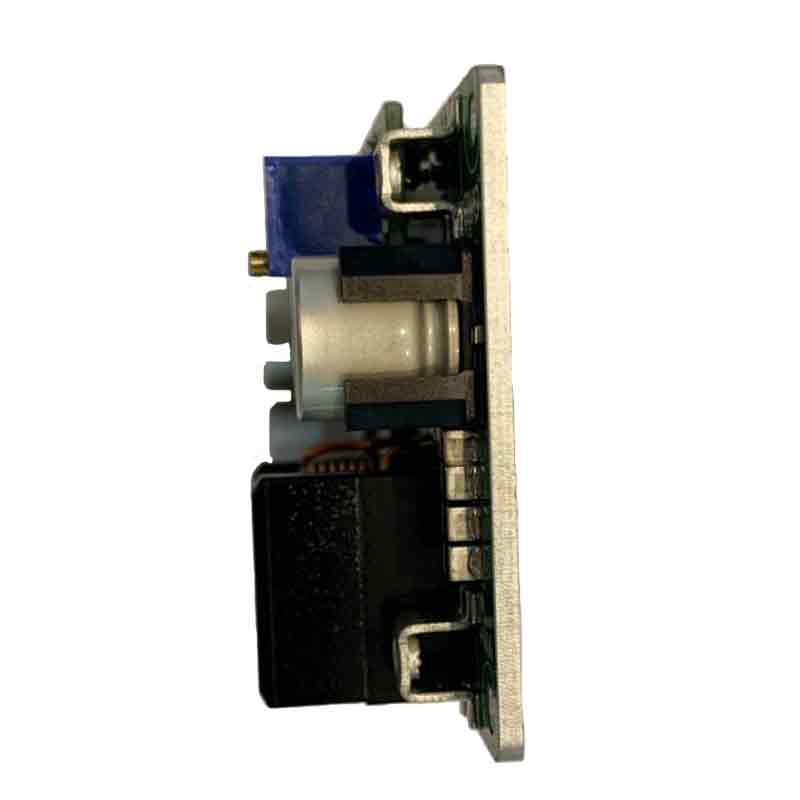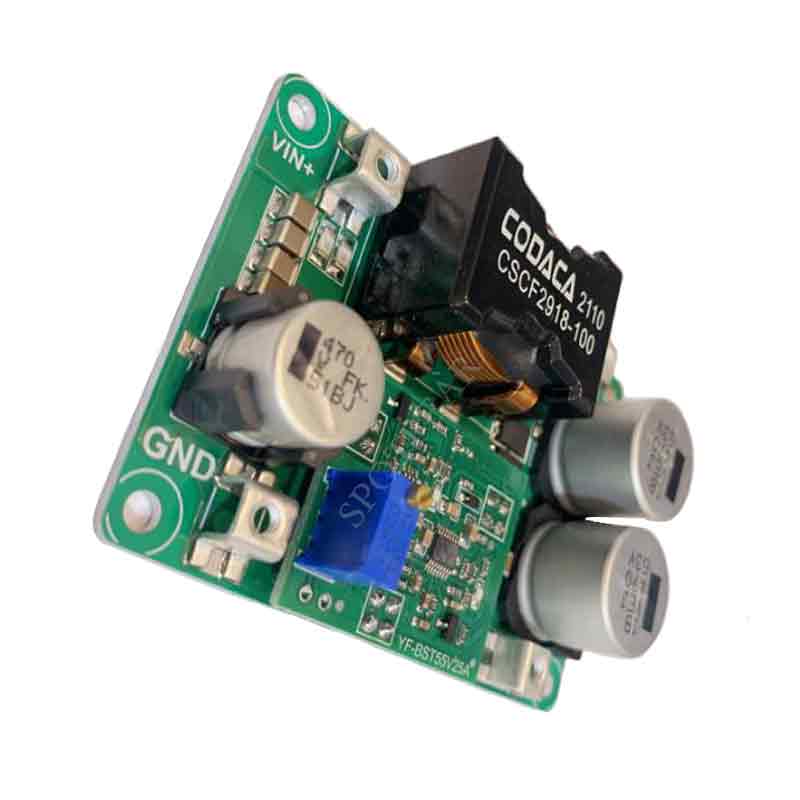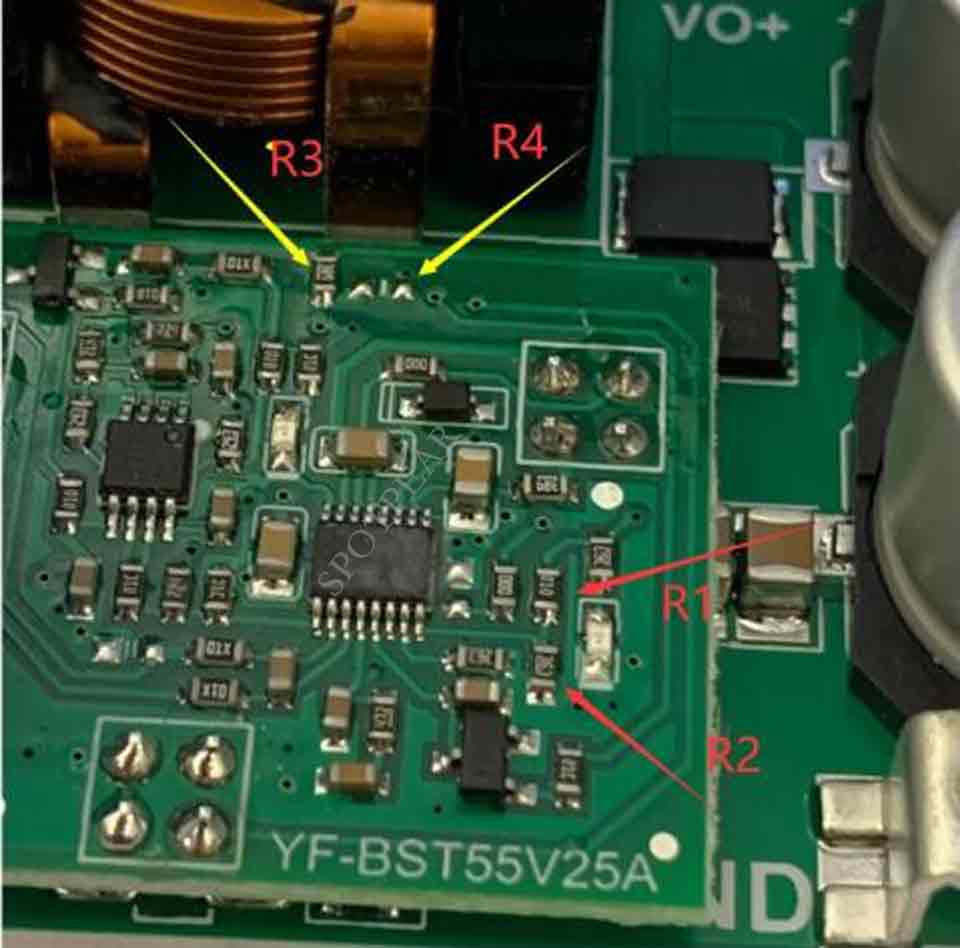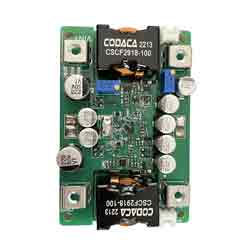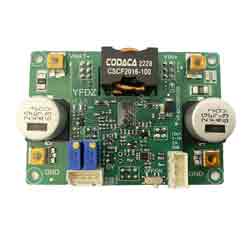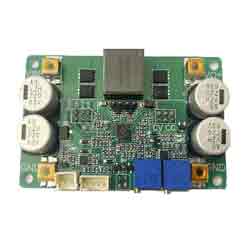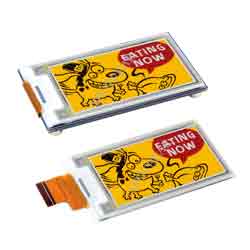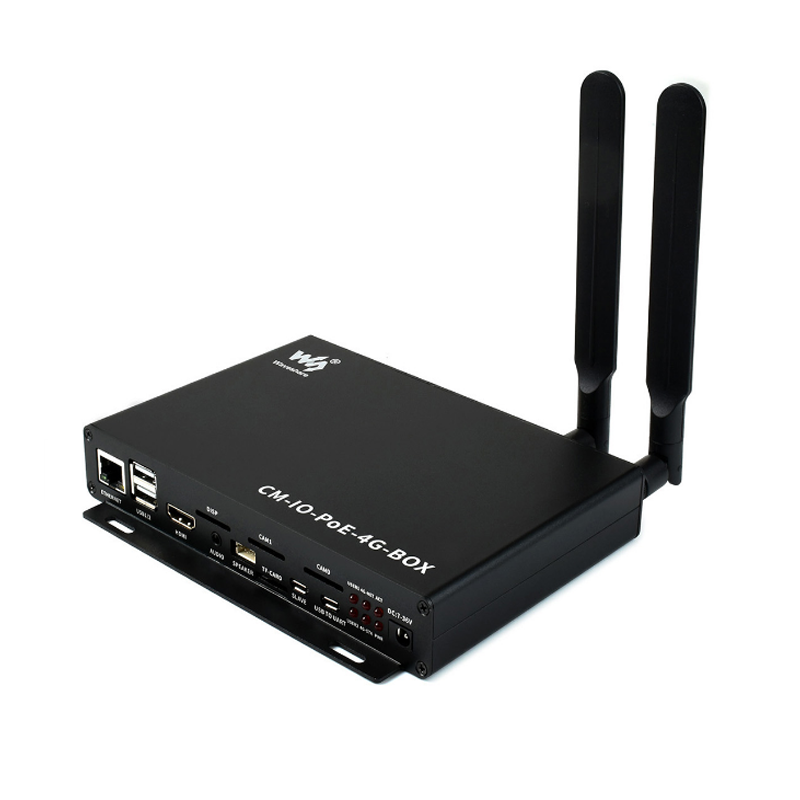- sales/support
Google Chat: zj734465502@gmail.com
- sales
+86-0755-88291180
- sales01
sales01@spotpear.com
- sales02
dragon_manager@163.com
- support
services01@spotpear.com
- CEO-Complaints
manager01@spotpear.com
- sales/support
WhatsApp:13246739196
- HOME
- >
- PRODUCTS
- >
- Common Module
- >
- Power
DC DC Booster Module Adjustable 5 32V/18A Output 12 52V High Power 12V/24V/48V
$35.9
DC-DC Booster Module Adjustable 5-32V/18A Output 12-52V High Power 12V/24V/48V
Power Module Recommend
【Note】
[] Do not use a laboratory adjustable power supply with 3A output to test this power supply.
[] Do not test the current-limited power supply using the CC mode of an electronic load.
[] The adjustable range of the output current regulation means that under the condition of sufficient input power, if the output voltage of the power supply is set to 20V and a 0.4Ω resistor is connected to adjust the CC potentiometer, the output current can only be adjusted within a range from the minimum to the maximum of 50A, and cannot be adjusted to the lowest limit value (except for 0A).
【Overview】
[] It is recommended to use it within a current of 15A for optimal efficiency.
[] Avoid significant differences in input and output voltage, with a maximum ratio of 4 (e.g., boosting 12V to 48V).
[] In high-temperature environments, it is necessary to derate the usage.
[] The output is suitable for constant voltage applications, but it is not recommended for charging purposes.
【Features】
[] Typical Performance (YF-BST50V20A)
[] Non-isolated boost power supply
[] Wide input range: DC5-32V
[] Output range: DC9-52V
[] Peak efficiency: >97.5%
[] Input short circuit protection
[] Over-temperature protection with automatic recovery
[] Adjustable output voltage
Potentiometer open circuit protection
Fast dynamic response in continuous mode
High-frequency operation with low electromagnetic interference (EMI) performance
Load indicator light and fault indicator light
Power can reach more than 500W (input >24V)
[] Aluminum substrate design with high thermal conductivity, capable of normal operation at 90°C
[] All tests were conducted with a 14V input voltage, resistive load, and at 25°C ambient temperature.
【Specifications】
[] Absolute maximum: ABSOLUTE MAXIMUM RATINGS:
[] Input voltage: minimum: -1V, Typical: none, maximum: 36V Note: continuous
[] Output voltage: minimum: -1V, Typical: None, Maximum: 56V
[] Storage temperature: minimum: -1℃, Typical: None, Maximum: 125℃
[] Withstand voltage of aluminum substrate and power supply pin: minimum: none, typical: 300V, Max: 500V Note: Non-isolated type
[] Maximum torque of screw terminal: minimum: none, typical: 0.5N.m , maximum: 1 N.m
[] Rotating life of potentiometer: minimum: none, typical: none, maximum: 200 cycles.
[] Recommended parameters:
Input voltage: minimum: 5V, typical: none, maximum: 32V
Input current: minimum:/, typical: 25A, maximum: 30A
Output voltage: minimum: 9V, typical: none, maximum: 50V
Output current: minimum:/, typical: 10A, maximum: 15A
[] Input characteristics:
Input working voltage range: minimum: 5V, typical:/, maximum: 32V
Input undervoltage protection adjustable range: minimum: 4.5V, typical: 5V, maximum: 20V Remarks: undervoltage does not boost
Undervoltage protection hysteresis value: minimum: 0.98 * Vu, typical: Vu, maximum: 1.02 * Vu Remarks: Vu is the set undervoltage value
Input current working range: minimum:/, typical: 20A, maximum: 25A
Input current limit value (short time): minimum:/, typical: 33A, maximum:/
No-load input current value: minimum: 4.0mA, typical: 6.5mA, maximum: 7mA Remarks: 14V boost 48V
[] Output characteristics:
Output voltage range: minimum: 9V, typical:/, maximum: 52V Remarks: can be changed to a maximum output of 56V
Output current working range: minimum:/, typical: 10A, maximum: 15A
Output current limit: minimum:/, typical:/, maximum: 20.2A
Load adjustment rate: minimum: -0.3%, typical: -0.5%, maximum: -0.8% Remarks: constant voltage on load voltage drop/Vout
[] State characteristics:
Load step 14V-48V/6A: minimum: 0.8V, typical: 1V, maximum: 1.2V Remarks: 0-100% lout
Recovery time: minimum: none, typical: 1.2ms, maximum: none Remarks:<2% Vout
Output voltage overshoot: minimum: 1.1V, typical: 1.3V, maximum: 1.5V Remarks: load 100% -0%
Recovery time: minimum: 1.5ms, typical: 2ms, maximum: 3ms Remarks:<2% Vout
Start time: minimum: none, typical: 14ms, maximum: 15ms Remarks: from power on to output voltage establishment
Output slow start time (0-24V): minimum: none, typical: 8ms, maximum: 10ms
[] Conversion efficiency:
14V to 48V (300W): minimum: 93.8%, typical: 94%, maximum: 94.1% Remarks: can reduce frequency to improve efficiency
24V to 48V (500W): minimum: 96.6%, typical: 96.8%, maximum: 96.9%
12V to 24V (300W): minimum: 94.2%, typical: 94.3%, maximum: 94.5%
[] Other features:
Switching frequency: minimum: 295KHz, typical: 300KHz, maximum: 305KHz
Recommended boost pressure difference ratio: minimum: none, typical: 2 times, maximum: 3 times Remarks: Vo/Vin
50% derating (lin) pressure difference ratio: minimum: 3 times, typical: 5 times, maximum: 6 times Remarks: Vo/Vin
Over temperature protection value: minimum: 3 times, typical: 5 times, maximum: 6 times Remarks: aluminum plate temperature
Power supply operating temperature: minimum: -45 ℃, typical: 25 ℃, maximum: 85 ℃
Main controller operating temperature: minimum: -45 ℃, typical: 125 ℃, maximum: none
Working temperature resistance of Electrolytic capacitor: minimum: none, typical: 105 ℃, maximum: none
Storage temperature: minimum: -20 ℃, typical: 25 ℃, maximum: 85 ℃
Rotating light value: minimum: 0.4A, typical: 0.5A, maximum: 0.52A Remarks: If there is a load, the red light will light up
Cooling method: Natural heat dissipation within 5W of losses, natural heat dissipation within 5W of loss
[] Note:
1. Boost output capacitors have a large ripple current. To reduce capacitor heating and extend their lifespan, it is recommended to connect electrolytic capacitors in parallel.
2. It is not suitable for battery charging as there is no current limiting function. The input can operate at a maximum current of 33A.
3. The output soft-start time may need adjustment in cases where the input source has a long startup time. For example, if an AC adapter takes 50ms to establish full-load voltage output, while this power supply has a startup time of 2ms, it may cause issues where the AC source cannot start with a load. In such cases, it is advised to first start the AC power supply and then start the DC power supply.
4. Note that the boost power supply’s output cannot be turned off. After undervoltage protection, the output voltage becomes equal to the input voltage, resulting in a pass-through state.
【instructions】
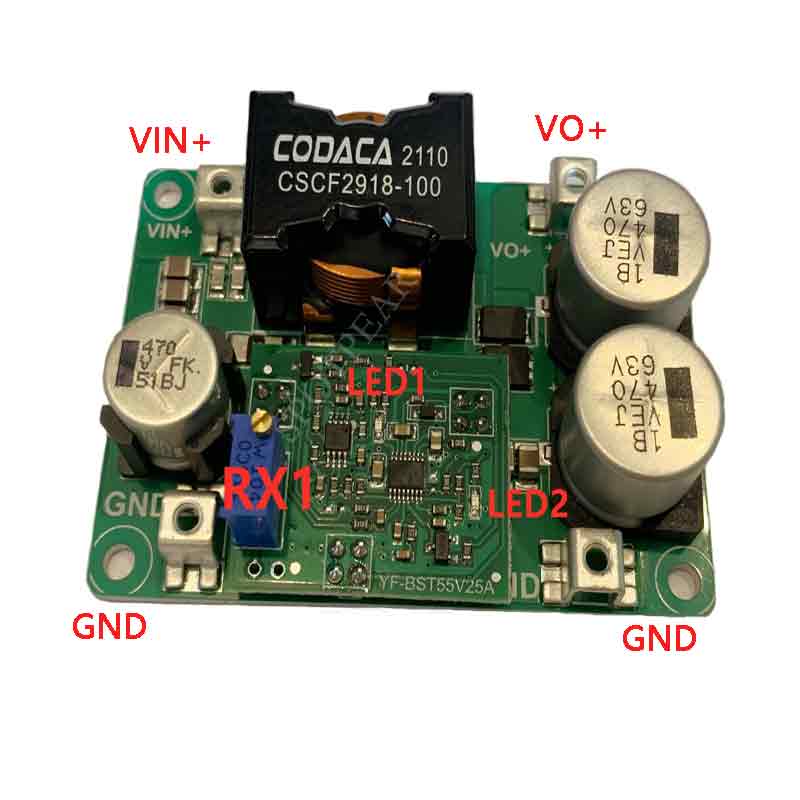
[] Marking on the board: VIN+
Function: Input positive terminal
Description: Connects to the positive terminal of the input source, such as a battery, switch power supply, generator, etc.
[] Marking on the board: GND
Function: Common ground
Description: Common ground for input and output connections
[] Marking on the board: VO+
Function: Output positive terminal
Description: Connects to the positive terminal of the output, such as a battery, load, supercapacitor, etc.
[] Marking on the board: RX1
Function: Output voltage adjustment
Description: Clockwise rotation increases the output voltage. Can be externally connected to a 100K potentiometer for control. The maximum adjustable output voltage is 52V. If a maximum of 56V output is needed, it can be modified, but there is some risk and lower reliability. It has protection against potentiometer open circuit, and the output is 27V when the potentiometer is open.
[] Marking on the board: LED1
Function: Fault indicator light
Description: This light illuminates when there is output overload (voltage drop of 10% or more) or when the power supply is overheated.
[] Marking on the board: LED2
Function: Power indicator light
Description: This light illuminates when the input power is turned on, indicating that the power supply is operational.
[] Note:
1. Testing this power supply requires ensuring that the input source can provide a sufficiently large current (>30A) to prevent power supply failure or damage, especially during load startup.
2. The startup time of the input source must be shorter than the startup time of this power supply (e.g., when using an adapter as the input). Otherwise, there may be difficulties in starting with a load.
3. The input wires connected to this power supply should not be excessively long (with high internal resistance). Otherwise, the power supply may experience oscillations and behave abnormally.
4. If there is a diode in series with the input source and this power supply, the power supply may be damaged due to surge voltages caused by instant on-off transitions (resulting from the circuit’s boost effect).
5. Do not use the constant current (CC) mode of an electronic load as the load for this power supply. It is recommended to use the constant resistance (CR) mode instead. When the CC mode absorbs current while the power supply limits its current in a constant current state, it may result in power supply failure.
PS: After a failure, the indicator lights will not illuminate, while both lights being illuminated indicates normal operation.
【Outline Dimensions】
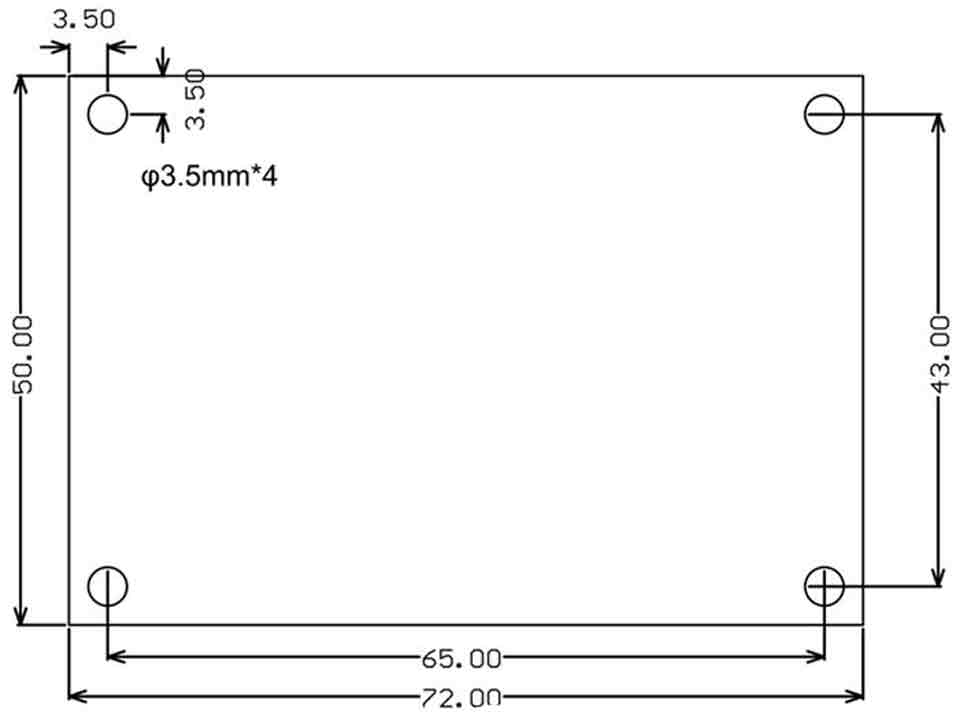
【Video】
视频




